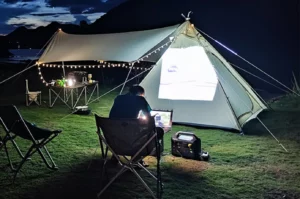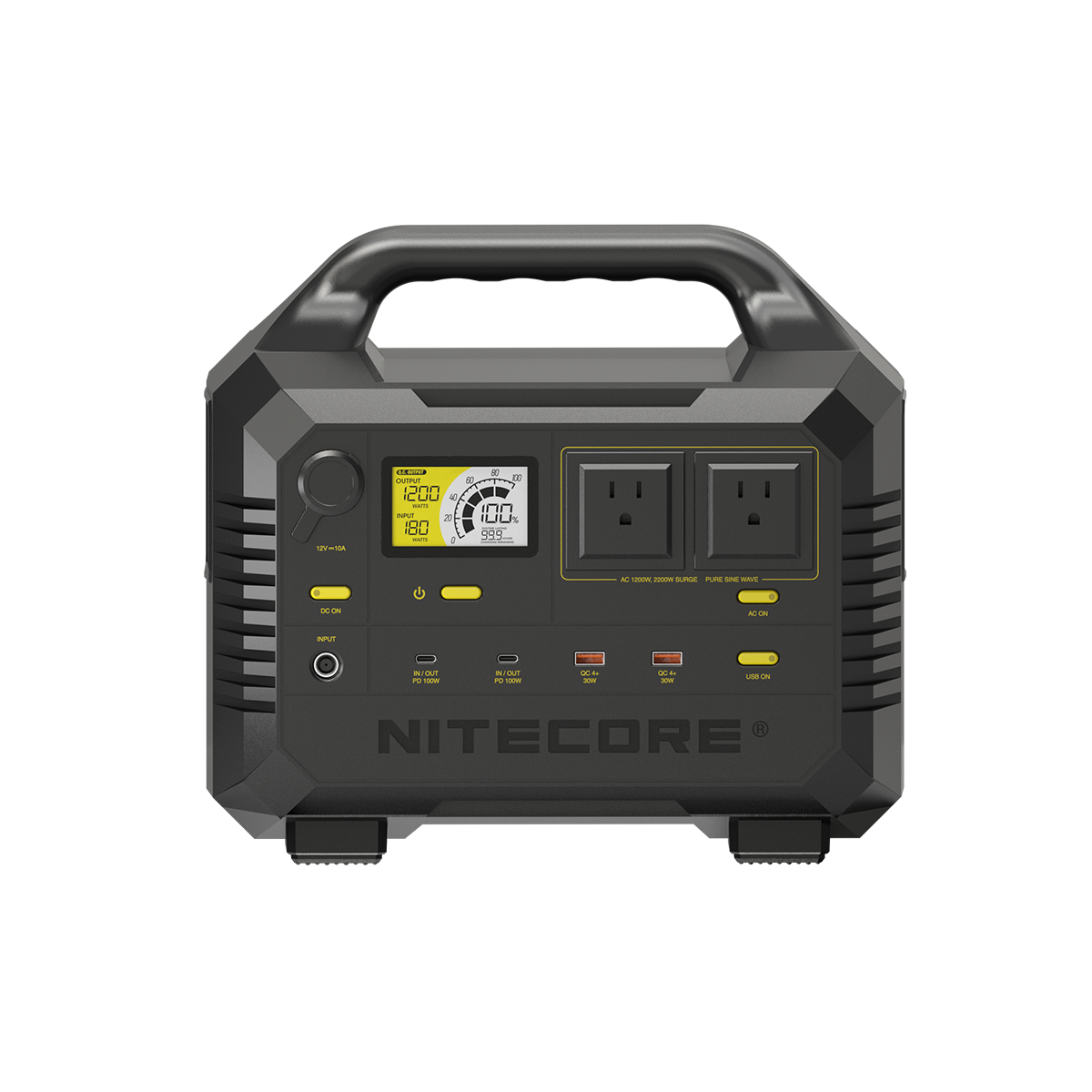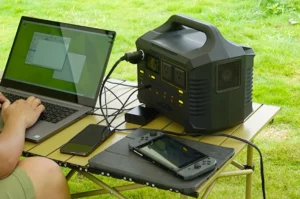When you’re out camping, you want to enjoy the beauty of nature without sacrificing the comforts of modern living. One way to achieve this is by bringing a camping power station with you. A camping power station is a portable device that allows you to charge your electronic devices, power your appliances, and light up your campsite. In this comprehensive guide, we will take a deep dive into camping power stations, including how they work, what features to look for, and some of the best models on the market.
How Camping Power Stations Work
Camping power stations, also known as portable power banks, work by storing electrical energy in a battery and then releasing that energy to power your devices. They are designed to be rechargeable, so you can use them multiple times on your camping trip. There are two types of camping power stations: solar-powered and battery-powered.
Solar-powered camping power stations harness energy from the sun using solar panels. These power stations are ideal for camping trips where you will be in direct sunlight for long periods. However, they can take longer to charge than battery-powered camping power stations.
Battery-powered camping power stations use batteries to store energy. They can be charged through a wall outlet or car charger, making them more versatile than solar-powered camping power stations. However, they require a power source to recharge.
 What to Look for in a Camping Power Station
What to Look for in a Camping Power Station
When choosing a camping power station, there are several factors to consider:
-
Battery Capacity
Battery capacity is the amount of energy a battery can store, measured in watt-hours (Wh). The higher the battery capacity, the more devices you can charge and the longer you can use the power station. If you plan to use the power station for extended periods, you will need a higher battery capacity.
-
Charging Ports
The number and type of charging ports determine how many devices you can charge at once and what types of devices you can charge. Most camping power stations come with USB ports, AC outlets, and DC outlets.
USB ports are used to charge smartphones, tablets, and other small electronic devices. AC outlets are used to charge larger devices like laptops, refrigerators, and power tools. DC outlets are used to charge devices that run on DC power, like car chargers.
-
Charging Time
Charging time refers to how long it takes to fully charge the camping power station. The charging time varies depending on the battery capacity and the charging method. Solar-powered camping power stations can take longer to charge than battery-powered camping power stations.
-
Portability
Portability is an important factor to consider when choosing a camping power station. You want a power station that is lightweight and easy to carry. Look for a camping power station with a handle or shoulder strap for easy transportation.
-
Durability
Camping power stations need to be rugged and durable to withstand the rigors of outdoor use. Look for a camping power station with a tough outer shell that can withstand bumps and knocks. A waterproof and dustproof design is also important for outdoor use.
Best Camping Power Stations on the Market
The Nitecore NES1200 is a high-capacity camping power station with a 1200Wh battery capacity. It has three AC outlets, four USB-A ports, two USB-C ports, and two DC ports, allowing you to charge up to nine devices simultaneously. It also has a built-in LED flashlight and an LCD screen that displays battery level and charging status.
The Nitecore NES1200 can be charged using solar panels, wall outlets, or car chargers. It also has a battery management system that protects the battery from overcharging, over-discharging, and short-circuiting. Its rugged design makes it ideal for outdoor use.
The Nitecore NES500 is a powerful camping power station with a 518Wh battery capacity. It has one AC outlet, two USB-A ports, two USB-C ports, and two DC ports, allowing you to charge up to seven devices simultaneously. It also has a built-in LED flashlight and an LCD screen that displays battery level and charging status.
The Nitecore NES500 can be charged using solar panels, wall outlets, or car chargers. It also has a battery management system that protects the battery from overcharging, over-discharging, and short-circuiting.
The Nitecore NES300 is a compact and lightweight camping power station with a 307Wh battery capacity. It has one AC outlet, two USB-A ports, and two DC ports, allowing you to charge multiple devices simultaneously. It also has a built-in LED flashlight and an LCD screen that displays battery level and charging status.
The Nitecore NES300 can be charged using solar panels, wall outlets, or car chargers. It also has a battery management system that protects the battery from overcharging, over-discharging, and short-circuiting.
The Goal Zero Yeti 1500X is a powerful camping power station with a 1516Wh battery capacity. It has a variety of charging options, including AC outlets, USB-A ports, USB-C ports, and 12V ports. It can charge up to 10 devices simultaneously, making it perfect for larger groups.
The Goal Zero Yeti 1500X is also easy to transport, thanks to its compact design and sturdy handle. It can be charged using solar panels, wall outlets, or car chargers, giving you multiple charging options.
Conclusion
Camping power stations are an essential tool for anyone who wants to enjoy the great outdoors without sacrificing the comforts of modern living. When choosing a camping power station, consider factors like battery capacity, charging ports, charging time, portability, and durability. The Nitecore NES1200, Nitecore NES500, Nitecore NES300 and Goal Zero Yeti 1500X are some of the best camping power stations on the market, offering a variety of features and charging options. With a camping power station, you can stay connected and powered up while off the grid.


 Nitecore NES500
Nitecore NES500